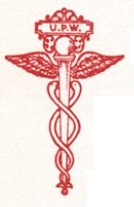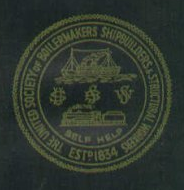Related Research Articles

The 1926 general strike in the United Kingdom was a general strike that lasted nine days, from 4 to 12 May 1926. It was called by the General Council of the Trades Union Congress (TUC) in an unsuccessful attempt to force the British government to act to prevent wage reductions and worsening conditions for 1.2 million locked-out coal miners. Some 1.7 million workers went out, especially in transport and heavy industry. The government was prepared, and enlisted middle class volunteers to maintain essential services. There was little violence and the TUC gave up in defeat.

The Scottish Trades Union Congress (STUC) is the national trade union centre in Scotland. With 40 affiliated unions as of 2020, the STUC represents over 540,000 trade unionists.

The Ceramic and Allied Trades Union (CATU) was a trade union representing pottery workers in the United Kingdom.
The Workers' Union was a general union based in the United Kingdom, but with some branches in other countries. During the 1910s, it was the largest general union in the UK, but it entered a rapid decline in the 1920s, and eventually became part of the Transport and General Workers' Union (TGWU).
The Industrial Relations Act 1971 (c.72) was an Act of the Parliament of the United Kingdom, since repealed. It was based on proposals outlined in the governing Conservative Party's manifesto for the 1970 general election. The goal was to stabilize industrial relations by forcing concentration of bargaining power and responsibility in the formal union leadership, using the courts. The act was intensely opposed by unions, and helped undermine the government of Edward Heath. It was repealed by the Trade Union and Labour Relations Act 1974 when the Labour Party returned to government.
The Miners' Federation of Great Britain (MFGB) was established after a meeting of local mining trade unions in Newport, Wales in 1888. The federation was formed to represent and co-ordinate the affairs of local and regional miners' unions in England, Scotland and Wales whose associations remained largely autonomous. At its peak, the federation represented nearly one million workers. It was reorganised into the National Union of Mineworkers in 1945.

The Union of Communication Workers (UCW) was a trade union in the United Kingdom for workers in the post office and telecommunications industries.

Fred Bramley was the second General Secretary of the British Trade Union Congress (TUC).

The National Union of Agricultural and Allied Workers (NUAW) was a trade union in the United Kingdom which existed between 1906 and 1982. It represented farmworkers.

Mary Reid Anderson was a Scottish suffragist and was a leading trades unionist. She was the general secretary of the Women's Trade Union League and was involved in the formation of the National Federation of Women Workers and National Anti-Sweating League. In 1910, Macarthur led the women chain makers of Cradley Heath to victory in their fight for a minimum wage and led a strike to force employers to implement the rise. About 1901, Macarthur became a trade unionist after hearing a speech made by John Turner about how badly some workers were being treated by their employers. Mary became secretary of the Ayr branch of the Shop Assistants' Union, and her interest in this union led to her work for the improvement of women's labour conditions. In 1902 Mary became friends with Margaret Bondfield who encouraged her to attend the union's national conference where Macarthur became the first woman to be elected to the union's national executive.

The Amalgamated Society of Boilermakers, Shipwrights, Blacksmiths and Structural Workers (ASB) was a trade union in the United Kingdom. Many of its members worked in shipbuilding, in which industry it was the leading trade union, while over time it also developed strength in engineering and construction.

Sir Ben Turner was an English trade unionist and Labour Party Member of Parliament (MP) for Batley and Morley from 1922 to 1924 and from 1929 to 1931.

The Cradley Heath Workers' Institute was built between 1911 and 1912 in Lomey Town, Cradley Heath, West Midlands, England. It was built as a social centre for the people of Cradley Heath and surrounding areas within the Black Country, intended to become a venue for educational meetings and lectures. It also housed Union offices, where members could come to seek guidance, and from which the Contributory Unemployment Fund would be distributed. In 2006 the building was threatened by a bypass and so was moved to the Black Country Living Museum in a collaborative project including Sandwell MBC, Midlands TUC and funded by the community and the Heritage Lottery Fund.

The Trades Union Congress (TUC) is a national trade union centre, a federation of trade unions in England and Wales, representing the majority of trade unions. There are 48 affiliated unions, with a total of about 5.5 million members. The current General Secretary is Frances O'Grady.
Charles Henry Sitch was Labour MP for Kingswinford.
The Amalgamated Society of Textile Workers and Kindred Trades (ASTWKT) was a trade union representing textile workers, principally silk manufacturing, in the United Kingdom.
The history of trade unions in the United Kingdom covers British trade union organisation, activity, ideas, politics, and impact, from the early 19th century to the present.

The National Federation of Women Workers (NFWW) was a trade union in the United Kingdom of Great Britain and Ireland active in the first part of the 20th century. Instrumental in winning women workers the right to a minimum wage for the first time, the NFWW broke down barriers for women's membership in trade unions in general.
Albert Edward Head was a British trade union leader. The longest-serving leader of a British trade union, he also served as chair of the General Federation of Trade Unions.
The Midland Counties Trades Federation was a trade union federation bringing together unions involved in engineering in the West Midlands of England.
References
- 1 2 "Records of the Chainmakers' and Strikers' Association". Archives Hub. Jisc. Retrieved 6 June 2018.CS1 maint: discouraged parameter (link)
- 1 2 3 4 5 Smethurst, John B.; Carter, Peter (2016). Historical Directory of Trade Unions. 6. Routledge. ISBN 1351930761.
- ↑ Marsh, Arthur; Ryan, Victoria (1984). Historical Directory of Trade Unions. 2. Aldershot: Gower Publishing. p. 166. ISBN 0566021617.
- ↑ Women Chain Makers (PDF). Dudley: Black Country Living Museum Trust. 2009. p. 14. Retrieved 6 June 2018.CS1 maint: discouraged parameter (link)
- ↑ Stenton, Michael; Lees, Stephen (1979). Who's Who of British Members of Parliament. III. Brighton: Harvester Press. pp. 330–331. ISBN 0855273259.
- 1 2 Eric Taylor, "Head, Albert (Bert) Edward", Dictionary of Labour Biography, vol.VII, pp.111–113
- ↑ Parker, James (2017). Trade unions and the political culture of the Labour Party, 1931-1940 (PDF). Exeter: University of Exeter. p. 125.